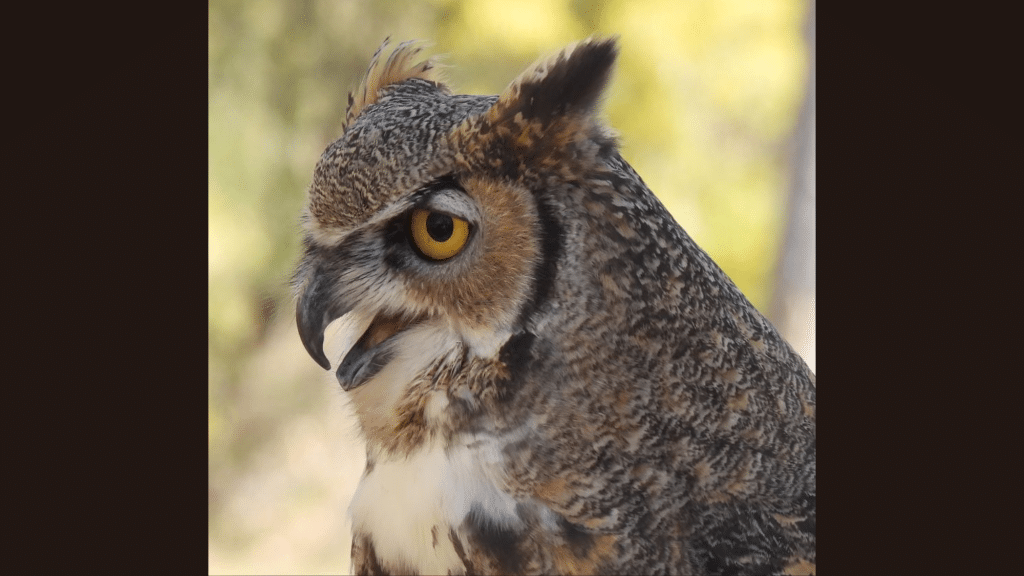Owls rule as some of the most efficient nocturnal predators in the world’s diverse ecosystems.
These silent hunters command respect not only for their exceptional hearing and vision but also for their specialized anatomical features.
Among the many interesting aspects of owl biology worthy of closer examination, their beak structure offers a particularly compelling area of study for researchers.
While many associate owls with their haunting calls and rotating heads, fewer people appreciate the remarkable engineering behind the owl’s beak and its critical role in hunting success.
Read on to know how this seemingly simple feature reveals the owl’s hunting strategy and ecological role in ways that might surprise you.
Anatomy of an Owl’s Beak
The owl’s beak, also known as a bill or rostrum, represents a marvel of evolutionary engineering, perfectly adapted for predatory efficiency.
Unlike the colorful bills of many birds, the owl’s beak maintains a straightforward yet lethal design focused entirely on functionality.
Basic Structure
At its core, an owl’s beak consists of a short, downward-curved upper mandible that extends from the skull, overlapping a shorter lower mandible.
This hook-like structure is covered by a keratin sheath, the same protein found in human fingernails, which grows continuously throughout the owl’s life, naturally wearing down with use.
The beak’s upper portion connects seamlessly to the owl’s facial disc, creating an integrated hunting apparatus.
This connection helps channel sound to the ears while maintaining a streamlined profile for silent hunting approaches.
About Owl’s Bite Force
Owls have a surprisingly strong bite for their size, with most species generating 30-50 psi, and larger owls like the Great Horned and Eurasian Eagle-Owl exceeding 500 psi.
This strength comes from specialized jaw muscles that maximize leverage through the beak’s design. The muscles are large relative to the owl’s small skull, allowing for precise, lethal strikes.
The curved beak concentrates force on small contact points, often targeting the cervical vertebrae or skull, ensuring quick kills with minimal struggle or injury.
How Owls Use Their Beaks from Capture to Consumption
Owls are skilled hunters with specialized beaks that aid in capturing, killing, and consuming prey.
Here’s how their beaks are used, from capture to digestion:
- Capture with Talons: Owls quietly fly down and grab their prey with strong talons, holding it tightly to keep it from escaping while getting ready to kill.
- Lethal Beak Strike: The owl bites the skull or spine of its prey with its sharp, hooked beak, using enough force to kill quickly.
- Transport to Perch: Once the prey is captured, the owl flies to a safe spot to eat without worrying about other predators.
- Processing Food: The owl uses its beak to remove fur and feathers and tears larger animals into smaller pieces, usually eating the most nutritious parts first.
- Digestion Cycle: The owl digests soft parts of the prey and turns bones, fur, and other indigestible parts into pellets, which it later expels.
Final Thoughts
The owl’s beak, which is often overlooked, is no doubt an incredible tool for hunting. It strikes precisely, delivering fatal blows, and helps process food efficiently.
The sharp, curved hook allows the owl to sever its prey’s spinal cord, while the powerful base generates force to kill.
Each part of the beak is perfectly adapted to the owl’s hunting needs, making it a key player in its success as a predator.
Though the owl’s eyes and silent flight often steal the spotlight, its beak is a true marvel of nature’s design.
Frequently Asked Questions
Can an Owl’s Beak Crush Bones?
Yes, many owl species exert enough force with their beaks to crush small animal skulls and bones despite their lightweight skull structure.
How does an Owl’s Beak Help with Silent Hunting?
The beak’s aerodynamic shape and matte surface integrate with the facial disc to maintain airflow without creating sound during flight.
Can Owl Beaks Regrow If Damaged?
Yes, the keratin covering continuously grows throughout an owl’s life, similar to human fingernails, allowing for natural repair.
Which Owl has the Strongest Beak?
The Eurasian Eagle-Owl possesses one of the strongest beaks, capable of crushing large prey skulls and processing animals like hedgehogs.





















